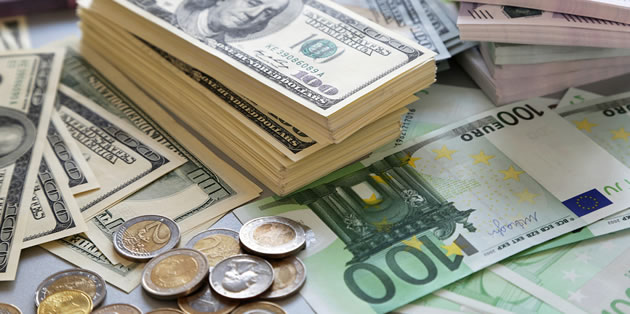The US Dollar to Euro (USD/EUR) exchange rate softened on Wednesday due to market attention focusing on the upcoming Federal Reserve policy meeting and as domestic, US economic data came in below expectations.
The US Dollar to Euro (USD/EUR) exchange rate eased to a session low of 0.9397
Market participants are eagerly anticipating these evenings Federal Reserve monetary policy statement as it is widely expected to offer more insight as to when the US central bank will begin to raise interest rates.
The Fed is expected to begin raising rates around the middle of the year and investors are expecting Fed policy makers to drop its reference to being ‘patient’ on the timing of a rate hike. By dropping the term, the Fed will give itself more flexibility to adjust its monetary policy depending on incoming economic data. If the term remains, then the US Dollar will likely fall as the removal of the word is expected.
With a run of US economic data, releases coming in below forecasts and generally disappointing has led some economists to raise their bets and predict that the statement will be dovish.
Also putting pressure on the ‘Greenback’ was the release of more disappointing domestic data. According to the Mortgage Bankers Association, the number of Americans filing for mortgages fell by 3.9% in the week ending March 13, adding to the 1.3% drop seen in the preceding week.
The weaker than forecast data will add to concern that Fed policy makers will be dovish. Federal Reserve Chairwoman Janet Yellen has previously voiced her disappointment that the USA’s housing market has had a limp contribution to the US economic recovery.
Eurozone Data Supports Single Currency
The Euro meanwhile was continuing to find support from the release of data, which showed that construction sector activity in the 19-member currency bloc increased strongly in January.
According to Eurostat, construction sector output across the Eurozone increased by 3%, a sharp reversal from the -2.7% figure recorded in the previous month and was a figure that was far better than the 1.2% figure expected by economists.
Data released on Tuesday was also supporting as it showed that economic sentiment across the Eurozone improved and another report showed that consume price inflation fell by 0.3% last month, a figure that matched economist expectations.
If the Fed delivers a dovish tone in its statement then the Euro will make further gains against the US Dollar and move further away from the 12-year low it slumped to last week.



